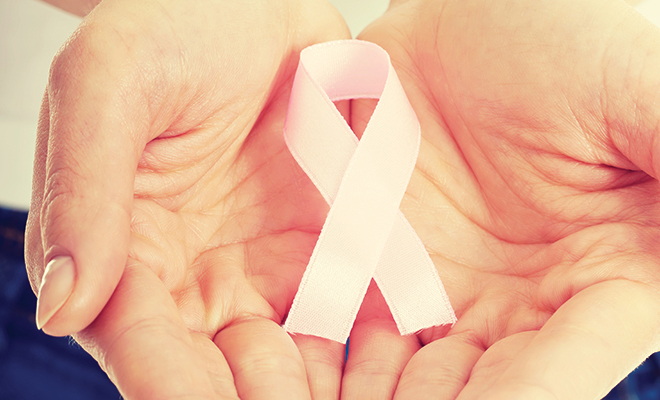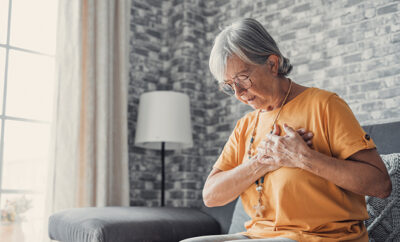
Breast Cancer: Decreasing Risk Through Lifestyle Choices
Whenever we hear the words “risk factor” our response is typically not positive, especially when we’re talking about breast cancer, or any other disease, for that matter.
But what is a risk factor?
Anything that increases our chance of developing cancer is called a cancer risk factor. Since risk factors affect our chances of getting breast cancer, a healthy goal would be to lessen the impact those factors have on us.
While some risk factors, such as a person’s gender, age or race, can’t be changed, others are personal choices–smoking, drinking, the foods we eat. Some factors influence risk more than others, such as genetics, while others, such as aging and modifying behaviors, can change over time.
Of course, breast cancer risk factors don’t tell us everything, but most experts agree that they are very important. So what do we do about the things that we CAN change?
Lifestyle Choices Make a Difference
When it comes to cancer and just about everything else, the choices we make have a profound effect on the rest of our lives. Much research shows that women who make healthy lifestyle choices lower their risk of developing invasive breast cancer regardless of whether they have a family history of the disease.
Exercise
There’s no way around it. We need to exercise. Regular exercise helps reduce breast cancer risk. And the American Cancer Society recommends that women who have been diagnosed with breast cancer exercise regularly (about five hours per week) to improve their quality of life and physical fitness. In addition, women who exercise regularly after being diagnosed with breast cancer may improve their chances of survival.
Body Weight
Overweight and obese women–those who have a Body Mass Index over 25–have a higher risk of being diagnosed with breast cancer compared to women who maintain a healthy weight, especially after menopause. For women who have had breast cancer in the past, being overweight can increase the risk of recurrence. This is mainly because fat cells make estrogen. Additional fat cells produce more estrogen, and estrogen can make hormone-receptor-positive breast cancers develop and grow.
Alcohol
Drinking alcohol is linked to an increased risk of developing breast cancer, and the more alcohol consumed the more the risk increases. Women who have two to five drinks per day have about one and a half times the risk of women who don’t drink alcohol. Excessive alcohol consumption is also known to increase the risk of developing several other types of cancer.
Birth Control, Babies and Breastfeeding
Taking oral contraceptives can increase the likelihood of getting cancer slightly more than never taking birth control. The risk seems to go back to normal over time once the pills are stopped. Having children later in life may also have an effect on a woman’s chance of breast cancer. Women who have their first child after age 30 or have no children have a slightly higher breast cancer risk than women who started families earlier. Along the same lines, studies suggest that breastfeeding may lower a woman’s chances of getting breast cancer, especially if done for longer periods of time.
Hormone Therapy
For many years, women have been taking estrogen and progesterone, often called combined hormone replacement therapy, to relieve some of the symptoms of menopause. In 2002, the long-term Women’s Health Initiative study of more than 27,000 women showed an increased risk of breast cancer and other diseases from HRT. However, the risk seems to go back to normal over time once the hormones are stopped.
Dense Breast Tissue
Research has shown that dense breasts can be six times more likely to develop cancer and can also make it more difficult to detect breast cancer on a mammogram. Along with lifestyle options, many doctors recommend additional screening for women with dense breasts.
Assess Your Risk
Other risk factors also play a role in development of breast cancer, but many are controversial, unclear or unfounded. Knowing your risk and how it can affect you is a great head start.
At the BrightPink.org website, women can use an online tool to help them assess their risk level by reviewing their health, family history and lifestyle choices. Here, women can learn more about their risk and seek recommendations for actions they can take to reduce it.
And while in general we’re focusing on women’s risks, please remember that men can develop breast cancer as well. Age, high estrogen levels, Klinefelter syndrome, a strong family history of breast cancer or genetic alterations and radiation exposure are factors for men.
Know Your Body
Although we can’t change some risk factors, knowing and taking action on those that we can change is important. By being aware of our body and our life we are paving the way to survival of this dreadful disease. Why leave it up to chance? HLM
Sources: brightpink.org, cancer.org and breastcancer.org.







